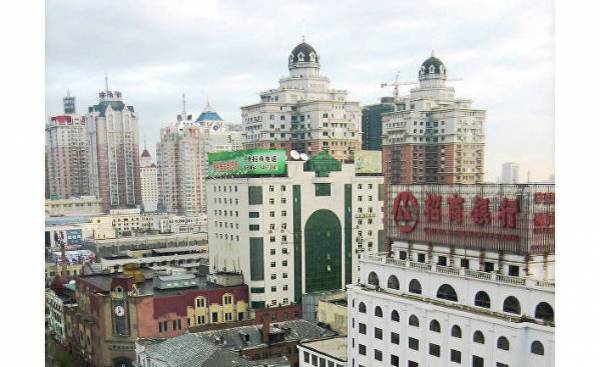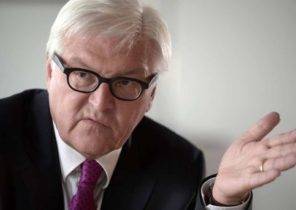
When the Chun BU (Bu Chong) first arrived in the northeastern Chinese city of Harbin, in 1984, to attend University, he was struck by the view of towering around European buildings with their mighty columns, arched doors and subtle reliefs. “I was born in the village, he said, never seen anything like it”.
From Gao Hong (Gao Hong), the local entrepreneur, such structures are not surprising. They were a common sight in Harbin of her childhood, the city, built in the late nineteenth century as a far Eastern Outpost of the Russian Empire, a transit point for East-Chinese railway in the region once known as Manchuria.
However, they both found something in common: the demolition of ancient architecture to make way for the widening of roads and identical buildings.
“At least a third of the old buildings have disappeared, said Ms. Gao. — The city has changed beyond recognition.”
Saddened by the destruction and inspired by the provided by the social networking possibilities, Mr. BU, Ms. Gao and other residents banded together to save the remnants of Russian architecture in Harbin, already battered by many wars, revolution and redevelopment in our time.
Among other things they are fighting for the fate of the Jihong bridge, built in 20-ies of the last century by Russian engineers and is listed as an “immovable cultural property” by the State administration for the protection of cultural heritage, whereby any changes must be approved by the Central authorities.
Last year when the city government of Harbin decided that the bridge should be removed to make way for high-speed rail line, it caused a fierce resistance from local residents. Hundreds of people signed petitions, thousands have left comments calling on authorities to stop the project. Someone posted on the bridge banners in protest.
Last summer, Mr. BU, now became a Professor of architecture at Harbin Polytechnic University, was sent signed by many teachers and students a letter urging the city authorities to preserve the bridge.
“In Harbin we can hardly find someone who doesn’t know the Jihong bridge, said Ms. Gao at lunch in the Russian restaurant ‘Lucia’. — So what is happening has caused extensive unrest — people deep is very worried.”
The state office for the protection of cultural heritage, too, intervened, rejecting the initial draft of the city authorities of Harbin, according to which the bridge was to be dismantled and moved to a new location.
“We took a strong position,’ said the sun, Sinica (Song Xinchao), Deputy Director of the administration. The importance of this bridge is that it is memorable for Harbin and its residents.”
According to the approved project, the bridge will remain in place, but will be longer and taller to accommodate the new railway line.
Ms. Gao is not the first time opposed the possible demolition of the city sights. In 2014 she started the study and description of the surviving historic buildings on messenger Vichat. In one such three-story structure, now become the jewelry store that formerly housed the American Consulate. Another, in which lives a Russian businessman, was captured by Japanese troops in the 1930’s, and its basement turned into a prison.
The work of Gao led to the emergence of the blog called “Study of the mysteries of Harbin”, which tells the story of 60-odd attractions. Around him formed a discussion group, now numbering about a hundred participants, including local architects, artists and scientists, occasionally, to discuss measures to preserve the unique architecture and culture of Harbin. One of the places of their meetings was the restaurant “Lucia” owned by Hu Hong (Hu Hong), born from Russian mother and Chinese father, an architect, is an active member of the society of protection of monuments.
Street where you grew up Mr. Hu, was once built up estates. However, in the 1980s, with the introduction of the market economy and real estate followed the demolition.
“It was economic reform and liberalization, led to large-scale construction,” said Mr. Hu at his restaurant, whose wooden ceiling and the walls he carved by hand; carving, he learned as a teenager, working in the village in the 1970s. “They said we need to build more apartments because there wasn’t enough place to live, but the quality of these new apartments — controversial”.
The history of Harbin is markedly different from other Chinese cities. In 1898 the Russian engineers and workers — both Russian and Chinese — profits for the construction of the Chinese Eastern railway. Soon they were followed by Russian Jews fleeing the pogroms, and the Jewish nobility exiled after the Bolshevik revolution, and the whites, seeking refuge after the defeat in the civil war.
To 1920 in Harbin settled more than 100 thousand Russians, and many thousands of representatives from more than 50 other nationalities. The city turned into an important economic centre with broad boulevards and domed Orthodox churches, mansions, shops and hotels. The new settlers built hospitals, banks and theaters, released Newspapers and founded ballet companies and orchestras.
Harbin flocked and Chinese — initially to help with construction in the future — to keep it going. Some of them have established stores and factories turned into successful entrepreneurs. Imitating their foreign neighbors, many have built stone houses with European trim and Chinese courtyard — style, which the locals often referred to as “Chinese Baroque”.
The first significant restructuring of Harbin occurred after the coming to power of the Communists. When Mao Zedong arrived in Harbin in 1950, he declared that the city needs to transform from consumer to production. The Central government has turned Harbin industrial centre, erecting huge factories and building modular homes according to Soviet patterns.
Then, during the Cultural revolution of the 1960s, about 80% of the 50 synagogues and churches of the city were demolished by the red guards, including a huge wooden Orthodox Cathedral of St. Nicholas, built in 1900.
Only recently, the local government finally realized that the unique architecture of the city can attract tourists, and the beginning of the renovation of the remaining historic buildings. Today, the city boasts the Cathedral of St. Sophia turned into a Museum, and the Russian buildings along the Central Boulevard. In one of the synagogues housed a concert hall, another Jewish Museum.
However, the local defenders of the monuments I think these measures are belated, and often ill-conceived.
In the area of Lao Daowai the city authorities expelled the residents, replaced the old buildings in the same style and lease them to commercial enterprises.
This project covered many other Chinese cities and led to the emergence of a “new old” buildings that have been condemned by the local defenders of the monuments, considering absurd the demolition by authorities of ancient architecture and construction of simulations.
“This is a failure, because it is all fake,” said Mr. Hu.
In their view, the expulsion of the former inhabitants belonging to them, and popular restaurants and shops, killed the spirit of the area.
“People have gone, and with them gone, and shops, said Yin Higcse (Yin Haijie), processor of sociology at the Harbin Polytechnic University. — Security culture means nothing to the government and developers. They do not care about nothing but economic interests.”
According to Ms. Yin, the city lacks channels of communication between local scientists and defenders of the monuments and authorities. “We are in a losing position, she said. — The power of the strong, and ordinary people — no.”
A day earlier, workers were drilling concrete approaches to the bridge Jihong. The sun shone four obelisks and carved lion heads, nearly a hundred years guarding the bridge.
“We tried, said Ms. Gao. — While all this may be futile, we still try our best”.







